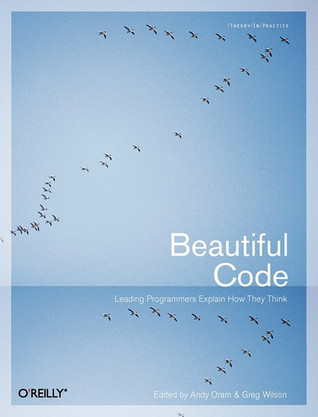What do you think?
Rate this book


563 pages, Paperback
First published January 1, 2009
This is a large collection of articles on the subject of beauty in software engineering. There are some real gems here, including articles by Brian Kernighan and Jon Bentley.
There are also a lot of rather dry articles where the author basically pats himself on the back for some project X he worked on.
I suppose that's what they were asked to write about, but Kernighan, who has no doubt written more beautiful code than any other author, has the class and the tact to pick someone else's code to write about.
I suspect not all the authors would agree with all the aesthetics on display. There's a chapter on debugging some hairy locking issues in the mult-threaded Solaris 8 kernel, which evidently had more locks than San Quentin. Two articles later, another author explains why locks are not beautiful and how the Haskell language manages to avoid them.